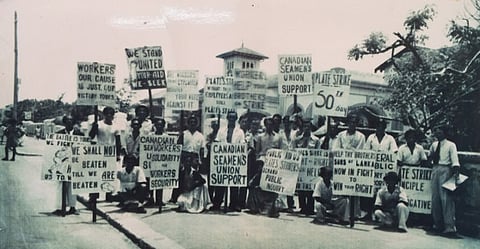Early each morning at the main bus stands of the Biyagama and Katunayake export processing zones near Colombo's international airport, a few thousand men mill around. Their purpose is not travel but to meet the 'brokers' or representatives of recruitment agents, who hire on the spot based on 'orders' for workers received from factory human-resource managers. These temporary workers fill daily or seasonal labour shortages in the readymade garment and other export-oriented industries in Sri Lanka that employ over 350,000 workers inside and outside industrial zones and parks. There are 2.5 million workers – around 54 percent of the combined public and private sector workforce (excluding cultivators in the rural economy) – in precarious forms of employment, according to the official 2012 Labour Force Survey.
Meanwhile, on the eve of Sri Lanka's presidential election in January 2015, the space opened by political competition for votes provided a rare opportunity for sections of the working class to highlight issues usually ignored by the government. Electricity, water board, and state bank employees staged walk-outs and picketed offices to demand that temporary workers in state institutions be made permanent, and that all future recruitments be made directly to the permanent cadre and not through private agencies. In late December 2014, the Sri Lanka Telecom (SLT) head office was blockaded by temporary workers demanding secure employment on equal terms with those on permanent contracts. The agitation ended when the management obtained a court order to remove them.

